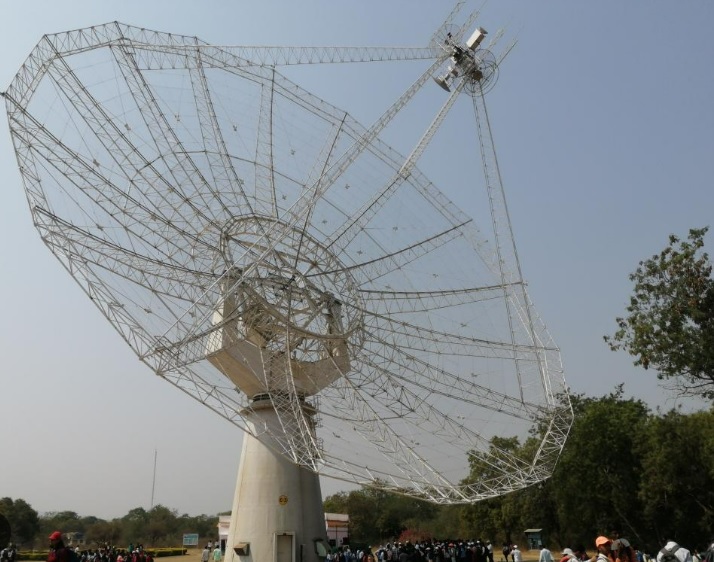The Pune institute’s latest analysis reveals additional potential explanations for the rapid jets that generate both X-ray and visible light in the aftermath.
In October 2022, astronomers worldwide detected the most brilliant gamma-ray radiation ever recorded. A recent study suggests that the data collected from this radiation pulse may challenge a long-standing theory regarding gamma-ray burst (GRB) jets.

The radiation, which lasted for five minutes on October 9th, 2022, was so powerful that it interfered with radio signals on Earth and traversed our entire solar system. Experts from the National Centre for Radio Astrophysics (NCRA) in Pune, India, who are renowned for their work in radio astronomy, concluded that the signals were indicative of a black hole’s birth.
Astronomers from around the world made a groundbreaking discovery in October 2022 when they detected an exceptionally bright gamma-ray radiation. According to a recent study, the data collected from this radiation pulse may challenge a long-standing theory related to gamma-ray burst (GRB) jets.
The radiation persisted for five minutes on October 9th, 2022, and was so intense that it disrupted radio signals on Earth and traversed the entire solar system. Researchers from the National Centre for Radio Astrophysics (NCRA) in Pune, India, who are highly regarded for their work in radio astronomy, have concluded that the signals suggest the birth of a black hole.
According to scientists, the birth of a black hole formed as the core of a massive star collapsing under its own weight is responsible for “long duration” gamma-ray bursts (GRBs). This process generates powerful plasma jets that travel at nearly the speed of light and produce gamma rays.
As these jets collide with the gas surrounding the dying star, a bright afterglow is emitted across the spectrum, as explained by Tanmoy Laskar, lead author of the study and assistant professor of Physics and Astronomy at the University of Utah, in a press statement released by NCRA. After analyzing data from various telescopes, astronomers discovered that the radio signals from the afterglow were brighter than anticipated.
Kate Alexander, co-author of the study and assistant professor of Astronomy at the University of Arizona, expressed initial excitement at the possibility of capturing a rare “reverse shock” signature. This phenomenon involves a shock wave moving backwards through a jet and illuminating it in the radio, and its detection could aid researchers in understanding the composition of GRV’s jets – a mystery that currently eludes the scientific community.
According to the astronomers, the detection of the brightest GRB would have been a significant step towards solving this puzzle. Laskar also noted that the radio emissions appeared similar to those of a reverse shock, indicating the presence of additional radio frequency emissions.
Alexander noted that the radio spectrum of GRB 221009A exhibited a slower fading rate than what would be expected based on models of how a reverse shock spectrum should evolve over time. This suggests the possibility of either a lack of understanding of reverse shocks or the discovery of a novel emission component. By analyzing the peak frequency and brightness of the emission component, the outflow’s properties could be calculated, revealing a small mass traveling at 99.4 percent of the speed of light.
Raffaella Margutti, an associate professor of astronomy and physics at the University of California, Berkeley and co-author of the study, explains that although the mass is high compared to many astrophysical objects, it is still relatively slower than the jets of GRBs.
Margutti stated that while there is a chance that a rapid jet is responsible for the X-ray and visible light in the afterglow, their analysis proposes a different origin for the radio light. She further mentioned that this discovery may potentially disrupt astronomers’ current comprehension of how GRB jets generate light. Regardless of the final outcome, Margutti asserts that the results challenge the long-standing theory about GRB jets and warrant a re-evaluation.
Margutti said that while there is a chance that a rapid jet may be responsible for the X-ray and visible light in the afterglow, their analysis indicates that a different source is generating the radio light. This discovery may have significant implications for astronomers’ understanding of how GRB jets create light, regardless of the ultimate outcome. Margutti stated that the research challenges a long-standing theory on GRB jets, and as a result, a reevaluation is necessary.
She further noted that although the origin of the radio emissions remains unknown, ongoing data collection and additional theoretical investigations and numerical simulations may provide a better understanding in the future. However, the situation remains a mystery for now.